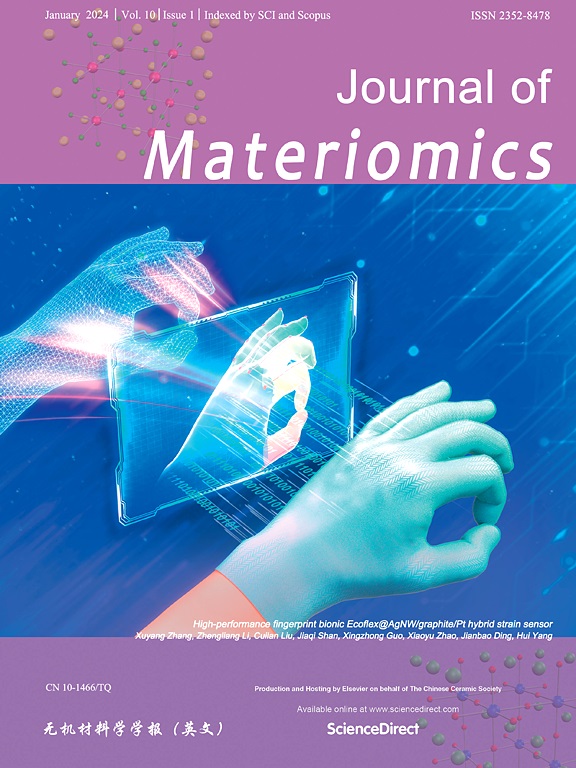Advancement in PMN-PT transparent piezoelectric ceramic for photoacoustic/ultrasound dual-mode imaging
IF 8.4
1区 材料科学
Q1 CHEMISTRY, PHYSICAL
引用次数: 0
Abstract
Dual-mode imaging combining photoacoustic and ultrasound modalities holds great promise for comprehensive tissue characterization. In traditional dual-mode imaging systems, however, the opaque ultrasound transducers are integrated in complex optical and ultrasound paths, leading to compromises in imaging efficiency and sensitivity. To address these challenges, we design and produce highly transparent Pb(Mg,Nb)O3![]() PbTiO3 ceramics with exceptional transparency of 68%, alongside a remarkable ultrahigh piezoelectric d33 of 1500 pC/N. Leveraging this material, we fabricate a high-sensitivity transparent piezoelectric ultrasound transducer (TPUT) with a center frequency of 16 MHz and a bandwidth of 30%, which seamlessly integrating ultrasound and photoacoustic capabilities into one system to achieve simultaneous photoacoustic/ultrasound dual-mode imaging, showcasing a remarkable sensitivity for deep-tissue detection (e.g., 7.5 mm thick chicken breast meat). Additionally, in vivo photoacoustic imaging of subcutaneous microvasculature in a mouse ear was successfully achieved via 28 MHz TPUT. Our innovation not only advances imaging performance but also offers a cost-effective solution, paving the way for transformative biomedical imaging applications.
PbTiO3 ceramics with exceptional transparency of 68%, alongside a remarkable ultrahigh piezoelectric d33 of 1500 pC/N. Leveraging this material, we fabricate a high-sensitivity transparent piezoelectric ultrasound transducer (TPUT) with a center frequency of 16 MHz and a bandwidth of 30%, which seamlessly integrating ultrasound and photoacoustic capabilities into one system to achieve simultaneous photoacoustic/ultrasound dual-mode imaging, showcasing a remarkable sensitivity for deep-tissue detection (e.g., 7.5 mm thick chicken breast meat). Additionally, in vivo photoacoustic imaging of subcutaneous microvasculature in a mouse ear was successfully achieved via 28 MHz TPUT. Our innovation not only advances imaging performance but also offers a cost-effective solution, paving the way for transformative biomedical imaging applications.

求助全文
约1分钟内获得全文
求助全文
来源期刊

Journal of Materiomics
Materials Science-Metals and Alloys
CiteScore
14.30
自引率
6.40%
发文量
331
审稿时长
37 days
期刊介绍:
The Journal of Materiomics is a peer-reviewed open-access journal that aims to serve as a forum for the continuous dissemination of research within the field of materials science. It particularly emphasizes systematic studies on the relationships between composition, processing, structure, property, and performance of advanced materials. The journal is supported by the Chinese Ceramic Society and is indexed in SCIE and Scopus. It is commonly referred to as J Materiomics.
文献相关原料
公司名称
产品信息
阿拉丁
Eu2O3
阿拉丁
TiO2
阿拉丁
PbO
阿拉丁
MgO
阿拉丁
Nb2O5
 求助内容:
求助内容: 应助结果提醒方式:
应助结果提醒方式:


